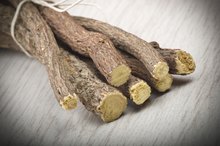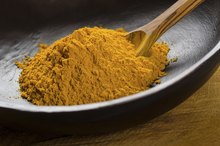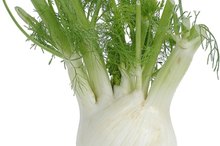Sarsaparilla Root Side Effects
Sarsaparilla is a climbing, evergreen vine found in Australia, Southeast Asia, Jamaica and the rain forests of South and Central America. If you’ve ever sampled old-fashioned root beer, then you’re familiar with the unique aroma and flavor of the plant’s root. The root has also been used for centuries as an aphrodisiac and blood toner, and to treat skin disorders, inflammatory diseases and syphilis. As with all medicinal herbs, sarsaparilla root may produce side effects.
If you are experiencing serious medical symptoms, seek emergency treatment immediately.
Allergic Reactions
Some people may have an allergic reaction to sarsaparilla root preparations, such as hives or skin rash. Inhalation of sarsaparilla root may trigger an asthma attack, according to a paper published in a 1996 issue of the "Journal of Allergy and Clinical Immunology." If you experience chest pain, swelling of the tongue or shortness of breath, seek immediate medical attention 1.
Gastrointestinal Effects
Does Extenze Have Any Side Effects?
Learn More
According to the “Physicians’ Desk Reference for Herbal Medicines,” sarsaparilla root contains the steroid saponins, which can irritate the lining of the stomach 2. You may need to consume large amounts of products flavored with sarsaparilla root extract to experience this effect, however. Most people tolerate it with no abdominal problems.
Kidney Irritation
Sarsaparilla root saponins are responsible for producing diuretic effects, meaning that they increase the production of urine, according to the "Physicians' Desk Reference for Herbal Medicines." This could potentially irritate the kidneys. Avoid sarsaparilla root if you have a history of kidney disease.
- Sarsaparilla root saponins are responsible for producing diuretic effects, meaning that they increase the production of urine, according to the "Physicians' Desk Reference for Herbal Medicines."
- Avoid sarsaparilla root if you have a history of kidney disease.
Hormonal Effects
Licorice Root & Smoking
Learn More
One of the steroid saponins found in sarsaparilla root is diosgenin, the same compound found in Mexican yam. Diosgenin is a building block essential for the production of steroid hormones, namely estrogen, testosterone and progesterone. The University of Maryland Medical Center explains that this conversion doesn’t take place in the body, though, and that the only way to get these hormones from diosgenin is by chemical synthesis in a lab. While many proponents of sarsaparilla root insist that the aphrodisiac properties of the herb are due to the presence of progesterone in the root itself, this isn't the case.
Likewise, some body builders claim that sarsaparilla root increases muscle mass due to being a rich source of testosterone, while others contend that menopausal symptoms in women are reduced due to estrogenic activity. Michael T. Murray, N.D., author of “The Healing Power of Herbs,” puts the argument to rest by clarifying that sarsaparilla root does not contain testosterone or estrogen 3.
The University of Maryland Medical Center points out that, since diosgenin is the same substance used to produce the first birth control pills of the 1960s, it may produce estrogen-like effects in the body. This is because diosgenin interacts with estradiol, a natural hormone produced by the body that is also found in certain medications. Avoid sarsaparilla root if you take oral birth control medications or are undergoing hormone replacement therapy or treatment for a hormone-driven cancer.
- One of the steroid saponins found in sarsaparilla root is diosgenin, the same compound found in Mexican yam.
- The University of Maryland Medical Center points out that, since diosgenin is the same substance used to produce the first birth control pills of the 1960s, it may produce estrogen-like effects in the body.
Related Articles
References
- Journal of Allergy and Clinical Immunology: Occupational Asthma Caused by Sarsaparilla Root Dust
- PDR for Herbal Medicines: Thomas Fleming
- The Healing Power of Herbs, 2nd Edition: Michael T. Murray, N.D
- Lu CL, Wei Z, Min W, et al. Polysaccharides from Smilax glabra inhibit the pro-inflammatory mediators via ERK1/2 and JNK pathways in LPS-induced RAW264.7 cells. Carbohydrate polymers. 2015 May 20;122:428-36. DOI: 10.1016/j.carbpol.2014.11.035
- Park G, Kim TM, Kim JH, Oh MS. Antioxidant effects of the sarsaparilla via scavenging of reactive oxygen species and induction of antioxidant enzymes in human dermal fibroblasts. Environmental toxicology and pharmacology. 2014 Jul;38(1):305-15. DOI: 10.1016/j.etap.2014.06.009
- She T, Feng J, Lian S, et al. Sarsaparilla (Smilax glabra rhizome) extract activates redox-dependent ATM/ATR pathway to inhibit cancer cell growth by S phase arrest, apoptosis, and autophagy. Nutrition and cancer. 2017 Nov-Dec;69(8):1281-1289. DOI: 10.1080/01635581.2017.1362447
- She t, Zhao C, Feng J, et al. Sarsaparilla (Smilax glabra rhizome) extract inhibits migration and invasion of cancer cells by suppressing TGF- ß1 pathway. PLoS One. 2015 Mar 5;10(3):e0118287. DOI: 10.1371/journal.pone.0118287
- Wang M, Zhao J, Zhang N, Chen J. Astilbin improves potassium oxonate-induced hyperuricemia and kidney injury through regulation oxidative stress and inflammation response in mice. Biomedicine and pharmacology. 83:975-988. DOI: 10.1016/j.biopha.2016.07.025 400
- Zhang C, Xu Q, Tan X, et al. Astilbin decreases proliferation and improves differentiation in HaCaT keratinocytes. Biomedicine and pharmacotherapy. 93:713-720. DOI: 10.1016/j.biopha.2017.05.127
- Zhou M, Huang L, Li L, et al. New furostanol saponins with anti-inflammatory and cytotoxic activities from the rhizomes of Smilax davidiana. Steroids. 2017 Nov;127:62-68. DOI: 10.1016/j.steroids.2017.08.013
Writer Bio
Karyn Maier is a seasoned columnist and feature writer. Since 1992, her work has appeared in Mother Earth News, The Herb Quarterly, Better Nutrition and in many other print and digital publications. She is also the author of five books, and is published in six languages.









